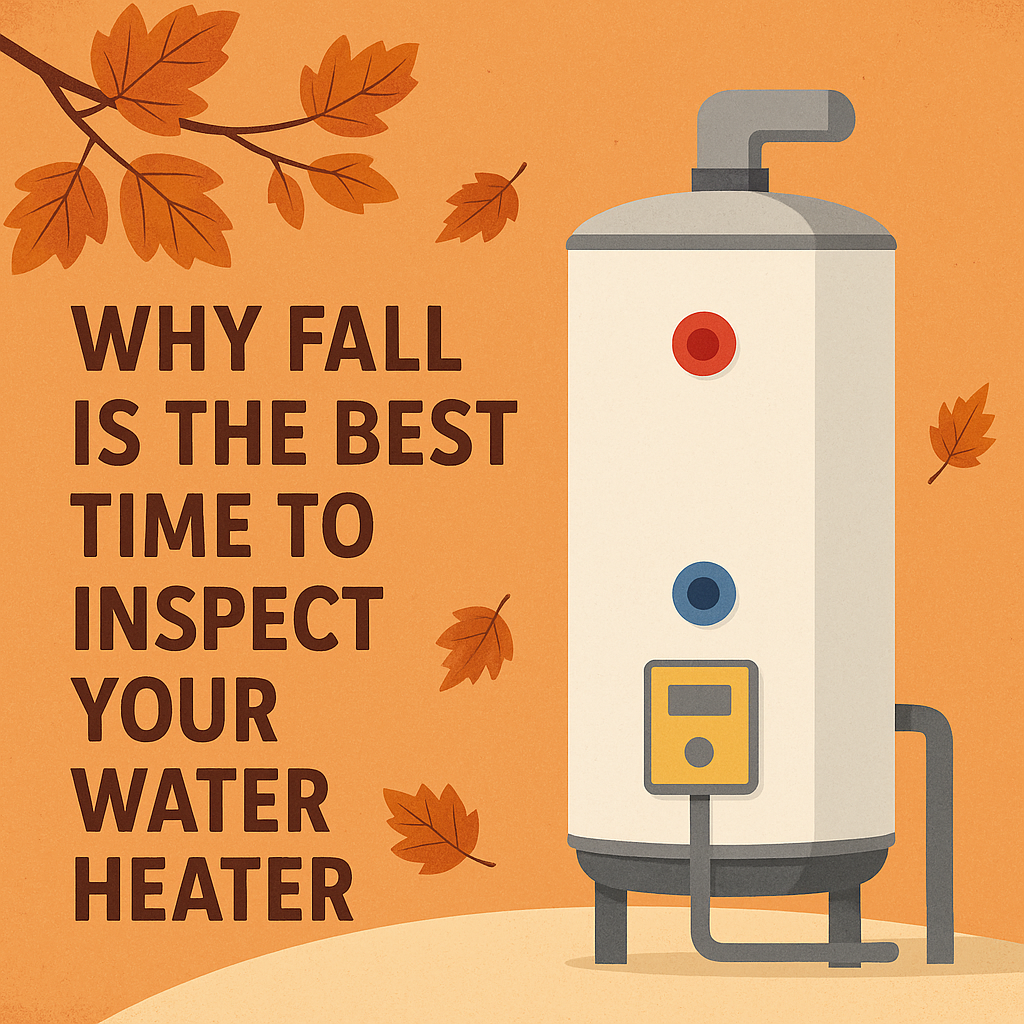1. Seasonal Stress on Your Water Heater
As outdoor temperatures fall, the groundwater entering your home gets significantly colder. Your water heater must work harder to raise that temperature to the cozy, steamy levels your household expects. That extra effort increases energy use, accelerates wear on heating elements, and can shorten the lifespan of older units.
Think of it like this: when you jog uphill, you burn more calories and get tired faster. The same concept applies to your water heater—except it’s doing that uphill run every day, all season long.
According to the U.S. Department of Energy, water heating accounts for about 18% of a home’s total energy use. A system clogged with sediment or burdened by corrosion may have to run longer and hotter to meet demand, driving up both your utility bills and carbon footprint.
Scheduling a professional inspection in the fall helps ensure the system is clean, calibrated, and ready to perform efficiently before winter begins. And if it’s nearing the end of its expected lifespan—usually around 8–12 years for a tank unit—your technician can help you plan for a timely replacement instead of an emergency one.
2. Catching Problems Before Winter Hits
When a water heater fails in January, it’s almost always at the worst possible moment—right before guests arrive, or during a freezing cold morning when you need that shower most. Fall inspections are proactive insurance against those situations.
A skilled plumber can spot early warning signs that homeowners often overlook: rust-colored water, unusual popping noises, or subtle drops in water temperature. These issues often stem from sediment buildup, failing thermostats, or aging anode rods—components that protect your tank from internal corrosion.
By addressing small problems early, you avoid bigger costs later. A simple anode rod replacement can cost less than $150, while a full tank replacement can cost over ten times that. Fall maintenance visits also provide a chance to evaluate whether your home would benefit from a modern tankless water heater installation, which provides on-demand efficiency and saves valuable space.
In short: fall inspections are about foresight, not firefighting.
3. Boosting Efficiency and Energy Savings
Just like changing your HVAC filters or sealing drafty windows, a water heater tune-up delivers measurable efficiency benefits. Over time, minerals in your water—especially in areas with hard water—settle at the bottom of your tank, forming a thick layer of sediment. That sediment acts like an unwanted blanket between the heating element and the water, forcing the system to burn more fuel to get the same result.
A professional plumber will drain and flush the tank, test the thermostat, inspect the pressure relief valve, and check for leaks around fittings or joints. The result is cleaner, faster water heating with less wasted energy.
According to the EnergyStar program, homeowners who perform regular maintenance and choose energy-efficient units can save hundreds of dollars each year on utilities. Over time, that savings adds up—not just in reduced energy costs, but in the extended lifespan of the equipment.
If you’ve noticed rising bills, inconsistent water temperatures, or slower recovery times, that’s your system’s way of asking for attention. Fall is your opportunity to respond before small inefficiencies turn into big expenses.
4. Preparing for Holiday Hosting
Picture this: it’s Thanksgiving morning. You’ve got a house full of relatives, the dishwasher’s running nonstop, and suddenly—lukewarm water. Avoiding that scenario is one of the biggest benefits of scheduling service in autumn.
The holidays create peak demand on plumbing systems. Between cooking, laundry, and showers, your water heater is working double time. Even minor inefficiencies or undetected leaks can quickly turn into emergencies when the system is under that kind of load.
By having Jim & Sons Plumbing inspect and service your water heater in October or November, you’ll go into the holiday season confident that your home can handle every guest, every load of dishes, and every long shower. It’s a simple step that makes your hosting stress-free.
The Bottom Line
A fall water heater inspection is more than maintenance—it’s preparation. It protects your comfort, prevents emergencies, and improves efficiency at a time when you’ll depend on hot water more than ever.
Whether you have a tank-style or tankless system, gas or electric, Jim & Sons Plumbing provides expert inspections, repairs, and replacements that keep your home running smoothly all year long. Schedule your seasonal check-up today and give yourself the peace of mind that only comes from knowing your home is ready for winter.
 951-248-9134
951-248-9134  Service@jimandsonsplumbing.com
Service@jimandsonsplumbing.com  Schedule Appointment
Schedule Appointment 